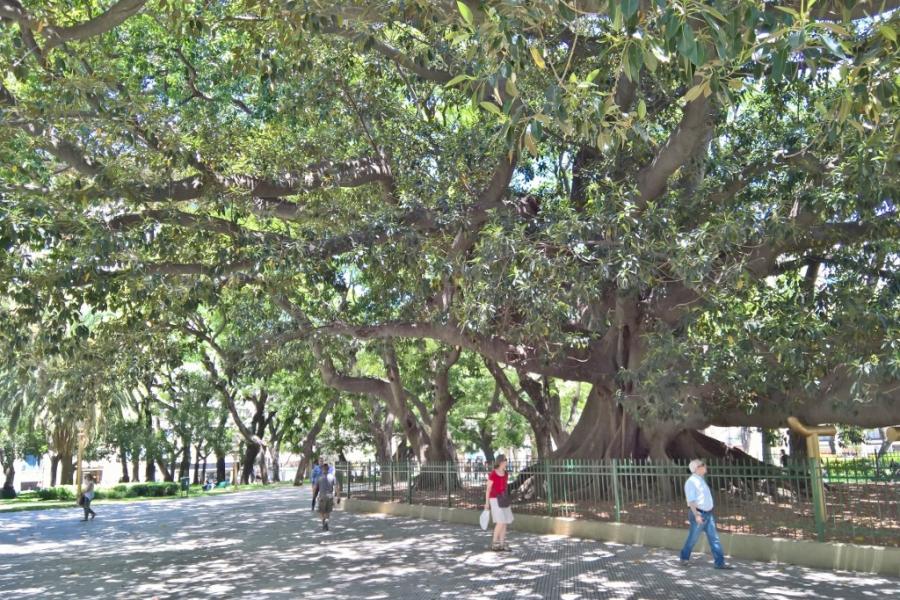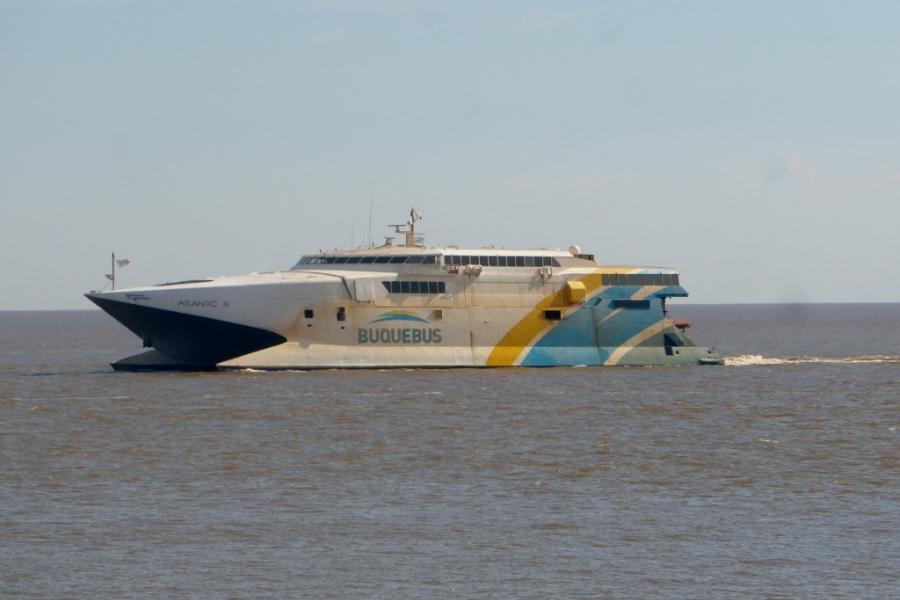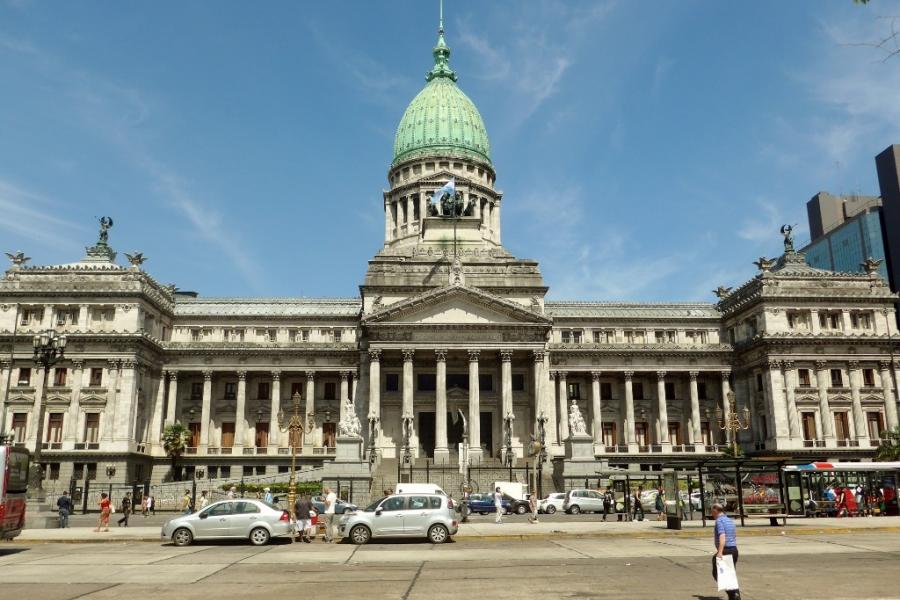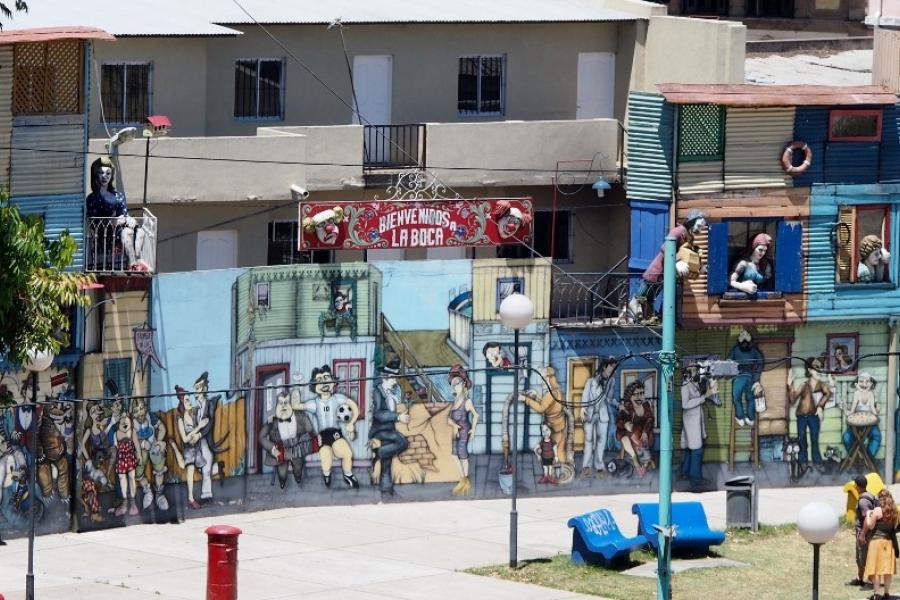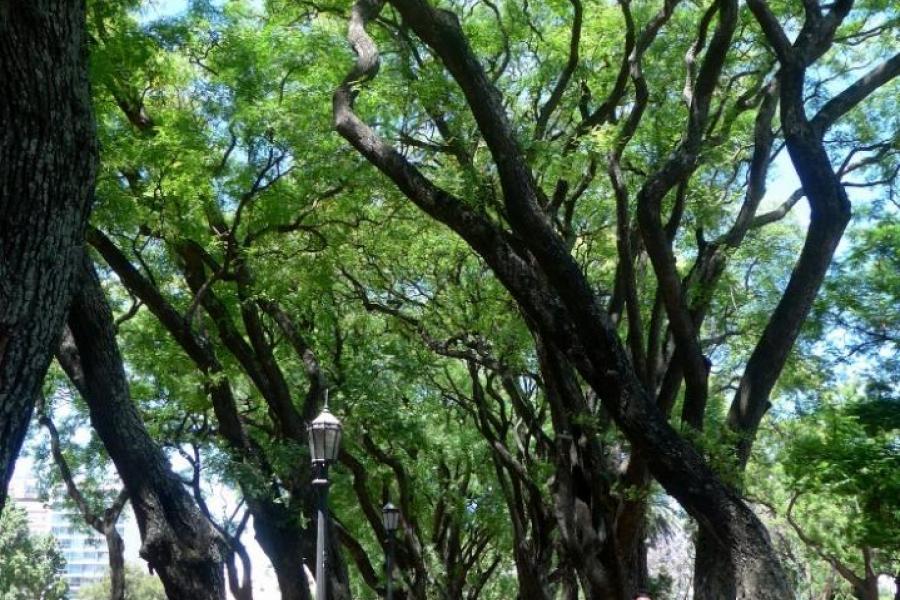The Argentinian Enigma (Originally posted 12 Dec 2016)
Country
With a week on holidays, Team Elephant has been rather more idle than usual leaving our curiosity parked in the basement with Elephant. There has, however, been plenty to do and we have kept ourselves busy with administration, rest and a little tourism. Our layover was originally intended to allow time to rebuild Elephant's suspension but a four day weekend put a stop to that. With Christmas looming over the horizon, we don't have time for repairs so we will accommodate Elephant's breakages as we accommodate our own and press on.
Despite our best intentions, however, it was impossible not to notice Buenos Aires when we rolled off the fast-cat ferry from Colonia del Sacramento in Uruguay. The port is right in the middle of town and our hastily constructed route took us straight though the inner suburbs. The place is big and sprawling. It has three million inhabitants and wide avenues rolling out across the flat plain of the Río Plata. The traffic was no worse than any other big city and the place, superficially at least, had a neat and orderly feel.
We had read the usual amount about this city before we arrived and I was struck by way most writers described Buenos Aires as “European” compared with others in South America. It only took a short stroll around our new neighbourhood to realise that this was one of those statements of the blindingly obvious. Buenos Aires, and Argentina as a whole, looks European because it is European. More that 95% of the population are of European descent, mostly from Spain and Italy with a scattering of others. Only the slimmest rump is Mestizo, Amerindian, African or Asian. Missing from Argentina generally, and Buenos Aires in particular, is that melting pot of humanity that so amazed and impressed us in the north of the continent.
Comparison with European cities is, for some reason, a common practice. Paris and Venice are often the paragons. I remember driving through the bombed-out shell of Beirut during the civil war. There were four of us, all working for the UN and wearing body armour.
“You know this place is the Paris of the Middle East”, said the Irishman with tongue in cheek as he weaved around piles of rubble between the bombed out buildings.
“I see that”, answered a Kiwi without missing a beat and starting a round of jokes about the Dublin of the Bosphorus and so on. You can play this game with any number of misplaced cities!
Needless to say, we all agreed that if you were looking for Paris, you should go to France. You wouldn't have found it in Beirut, not in those grim days.
Leaving aside the broad avenues of Buenos Aires, the other great interest has to be the Argentinian economic enigma. At the end of the 19th Century, Argentina was one of the richest countries in the world. It had a wonderful combination of excellent soil and climate, ample natural resources and a capable population. It was seen as a future world economic power. This has been, however, a promise unfulfilled. A century of mismanagement by dictators, military junta and unrestrained socialists has taken its toll. The country's GDP is half that of Australia, it has defaulted on government debt in recent years and the credit rating of “B” makes Argentinian bonds speculative.
The pundits provide lots of analysis on why this has come to pass but it seems to me they mostly reflect their own prejudices. Those of the right see the grubby fingerprints of Peronist socialism. Those of the left point to the massive debt incurred during the long winter of the military junta. Educationalists note the lack of investment in public education through the early years. Historians blame the legacy of Spanish administration and the dead hand of the Dons who still control vast swaths of the most productive land. The IMF noted ingrained corruption at every level. Everyone has a pet villain and I have, without doubt, left a few off the list.
The one point that stands out from all of this is that Argentina has tried almost every political and economic theory. From dictators to elected representative government, from a directed economy and nationalisation to neo-liberal and anti-labour economic policies, Argentina has tried them all. Perhaps this too is part of the enigma. Good governance, like everything else, is not achieved in a great flash of light and colour. It is mostly hard graft over generations of making incremental improvements and being thankful for the occasional small breakthrough.
On a blistering hot Saturday we visited the old Recoleta Cemetery, a crowded few acres of mausoleums as ostentatious as you can find anywhere. There were a few good men and women interred at Recoleta. A life-sized bronze of the boxer Luis Ángel Firpo, for example, showed him in his prime in 1923 when he beat Jack Dempsey to become Latin America's first great champion and earn his title Wild Bull of the Pampas. Many others, however, were monuments to scoundrels, made larger and more impressive in death than they had been in life. A three metre tall statue of a general beaming down with a smile of gentle beneficence is a monument only to hubris and a good pointer to what went wrong in Argentina.
After the Recoleta Cemetery we visited the Museum of Fine Arts, then started the long walk home past the Law School. This impressively large, neo-gothic pile looked run down and shabby. The grounds were unkept and dirty. Spray can tags were everywhere. As we crossed a major avenue on a pedestrian walkway, Jo looked back at the building and said,
“You know they call Buenos Aires the Paris of the south?”
“Reckon?” I answered. “Seems more like Palermo to me.”
If you are looking for Paris, go to France. Buenos Aires, however, you can find on the southern shore of the River Plate. It has its own interesting story and is a great city in its own right.


